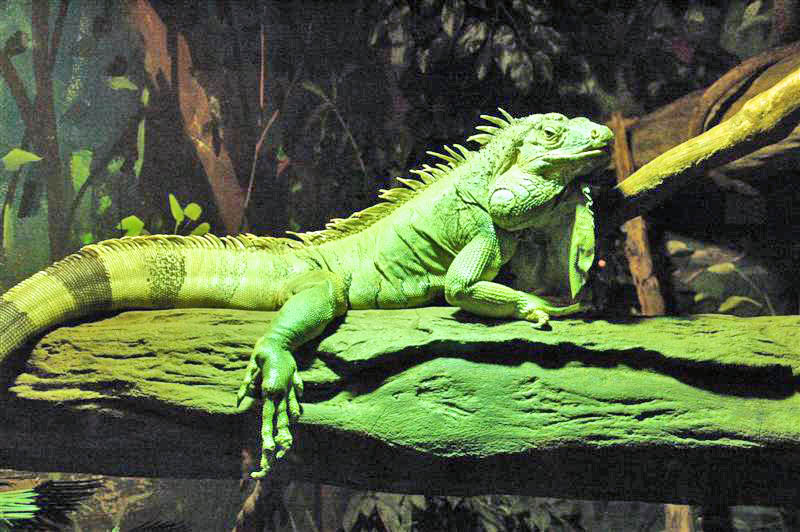Iguanas, specially the wild ones are crucial part of the ecosystem; a slight change in the population of Iguanas in the wild can harm the total balance of the ecosystem. So when setting up your own pet house you need to know things about the proper iguana ecology so that it can feel comfortable in your captivity.
One thing that you will probably notice is that iguana ecology is not an easy task to replicate and the iguanas themselves are not that easy to take care of too. Iguanas like most reptiles are solely dependant on their environment for their most basic needs like heat and body chemistry. Iguanas use wavelengths of light on its environment to aid with their metabolism.

These animals are very well-tailored to their natural habitat, which are humid and warm environment which can be very different from the confined cells that they are when in your captivity. So if you can provide an environment that is conducive to live in for the iguanas they might get sick or even die.
Basically an iguana needs the following to survive under captivity: A large cage or room is a crucial thing in your iguanas growth, you have to keep in mind that a fully grown and properly cared for iguana can grow up to six feet long. A large 55 gallon aquarium is barely enough in your iguanas first year growth.
At most the minimum height of an iguana’s cage should be six feet tall and twice the length of the Iguana. Iguanas are know to be arboreal so they feel much comfortable up on high places like a tree so be sure to include even just a small branch on you cage for them to hang on. The total width of your iguana’s cage must be at least half the iguana’s length.
The rule of the thumb should be the larger the cage the healthier.
A small cage can harm your iguana’s growth and can even injure and stress them out. They can even cause muscle weakness due to the small amount of space that they can crawl in causing them to be stagnant on one place and build fat and hinder the much needed exercise to burn them.
The room temperature should also be taken into consideration, a basking should be provided with a temperature of ninety to ninety-five degrees Fahrenheit and the air temperature should not be lower than that what they are accustomed to which is eighty degrees Fahrenheit.
Proper room temperature aids the iguanas with their digestion process. On the other hand, the inadequate supply of it can cause illness in your iguana’s digestive system.
Your iguana should also have a day and night cycle so you have to find ways to provide heat without the lights on night times.
As you can notice, providing your iguana with the right kind of habitat is crucial to its health and growth. These things that are stated about are a must for an iguana to be able to survive in your captivity. Not being able to provide this stuff may cause death to your pet. Just try to get the right information about your iguanas need and everything will work out just fine. Having an iguana pet is not an easy thing but it I surely an enjoyable sight to watch your iguana grow.
Learn about red iguana and green iguanas at the Iguana Care site.
